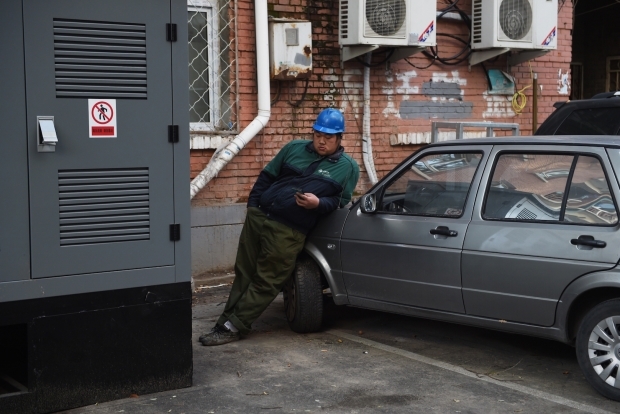As the Chinese Communist Party leadership wrapped up its Fifth Plenum, the meeting at which the Party’s leadership set the Five Year Plan that will shape economic policy through 2020, what progress has been made on the “comprehensive deepening” of economic reform Xi Jinping called for at a plenum two years ago and what are its prospects going forward? Are reforms proceeding fast enough? And where is China’s economic policy headed? —The Editors





Comments
Houze Song
Reform is happening in China at two speeds. On the one hand, reform is moving fast in banking and finance. To give just a few examples, the deposit interest rate has been completely liberalized, capital can move more freely across the border, and the central bank had tried to let the market determine the exchange rate before the initiative backfired. But the results of these financial reforms are mixed. Some reforms, such as capital account liberalization, are more likely to be contractionary in the short run. On the other hand, reform is happening very slowly, if at all, in the real economy. Month after month, China’s state-owned enterprises (SOEs) are accumulating more debt while making less profit. Yet the recent SOE reform document gives no clear indication of an overhaul comparable to the SOE reform in the late 1990s. On the contrary, bolstering SOEs and strengthening the Party’s control over SOEs are now the top goals.
It seems the thinking behind this two-speed reform is that a liberalized financial sector could allocate capital more efficiently, and this will accelerate the growth of emerging sectors. As emerging sectors strengthen, they could get the lackluster state sectors out of their troubles. In short, Beijing is hoping to grow out of its problems.
However, the reality is that China’s capital market is liberalized yet far from efficient. China’s emerging sectors are growing, but their size remains insignificant compared to the traditional industrial sectors. The combination of a liberalized yet inefficient capital market and dearth of profitable investment opportunities is more conducive to creating new bubbles, not new economy.
China’s recent stock market boom-burst cycle clearly shows financial liberalization without reforming the real economy is more likely creating a bubble and crisis than generating growth. Looking back, it is clear the boom was fueled by excessive liquidity and growth of margin trading. Yet margin trading was introduced as part of the financial liberalization process, and the growth of margin trading had been seen as positive up until this April. The state media portrayed the stock bubble as vindication that reform is working and China could grow out of its problems. However, all bubbles eventually burst. And after the stock sell-off, Chinese people finally realized how weak the economy is, and they began to look overseas for investment opportunities. Incidentally, capital account reform has made it a lot easier for people to move money out of China. And the subsequent exchange rate reform actually triggered further capital outflow.
It is now clear that without reforming the real economy, especially SOEs, China’s economic overhaul is unlikely to succeed. It remains to be seen whether Beijing will change its stance on SOEs as the economy further weakens.
Arthur R. Kroeber
Houze Song is right that the pace of reform this year was inconsistent. Financial reform is, as he says, the furthest advanced. Less noticed but just as important is fiscal reform, which has curbed the practice of local governments funding themselves by land sales and land-backed loans, and restructured much local debt into more appropriate long-term bonds backed by future revenues. On the other hand, progress in many other areas—reorganizing state-owned enterprises, creating a more robust and fairer market for rural land, and dismantling the hukou-related barriers to labor mobility and urban citizenship—has been slow.
China is a large and complex country; it should not surprise us that the pace of reform has been uneven. We should also remember that many of the reforms outlined in the Party’s policy agenda, the Third Plenum decision of November 2013, set 2020 as their target completion date. Restructuring the world’s second-biggest economy is an intricate task. Even now it is a little early to jump to judgment about the success or failure of the reform agenda. On the whole, it is probably fair to say that China has achieved more substantive economic reform in the past two years than either Japan or India under their ostensibly reformist leaders Shinzo Abe and Narendra Modi.
My main question about the reform program has less to do with results in particular areas than with general orientation. The first three decades of Reform and Opening were successful mainly because there was steady progress toward making markets more competitive. This enabled a high rate of economic growth even though there was relatively little privatization and the state retained direct control over vast swathes of assets. China’s leaders have made clear that systematic privatization of state assets is still off the table. Therefore the future growth outlook depends heavily on whether the government is committed to increasing competition. So far the record is uninspiring: barriers to entry in over-regulated service sectors have not been lowered, and the attitude toward foreign companies has been hostile. Until we see strong affirmation from Beijing that it favors more vigorous competition throughout the economy, and specific measures to break down anti-competitive practices and structures, we should expect that China’s growth rate will continue to slow.